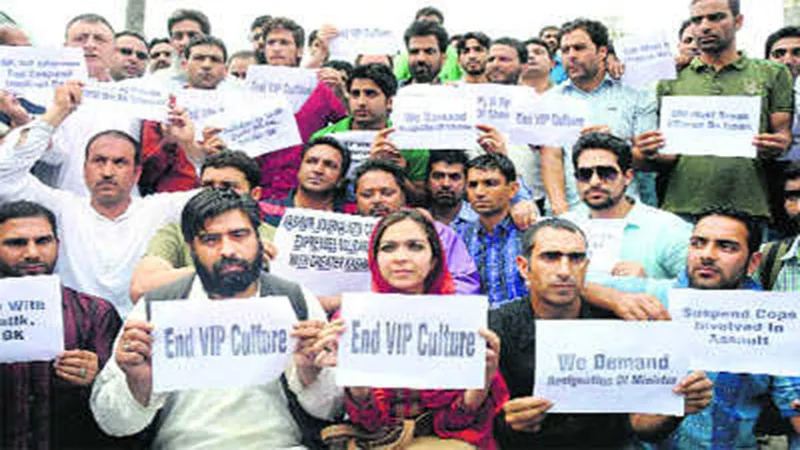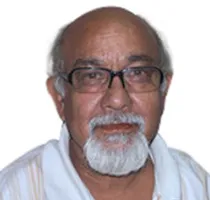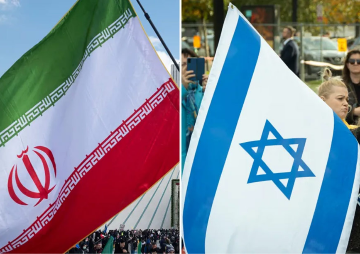Generally, every ruling party in a democracy is apprehensive, a bit cautious, a trifle worried and sometimes afraid of the media. In opposition, all parties sing paeans to a free media and vouch for freedom of expression. Strangely, they change colours like a chameleon when role reversal takes place.
Therefore, one should not be surprised to see a clear pattern of preventing, restricting and denying media accessibility to information, ever since the BJP-led NDA government assumed power in May 2014 at the Centre and in BJP-ruled states.
The BJP-led government of Maharashtra on August 27 issued a fresh set of guidelines to the state police, empowering it to invoke the IPC Section (124-A) pertaining to sedition against those citizens who attempt to bring into ""hatred or contempt, dissatisfaction and provoking violence"" against the Central or state government. The circular containing these guidelines says the sedition clause can be invoked against ""whoever, by words, either spoken or written, or by signs or by visible representation, is critical of politicians, elected representatives belonging to the government"".
It must be conceded here that these guidelines were issued in compliance with an assurance given to the Bombay High Court by the state government --- while dropping the sedition charge against cartoonist Aseem Trivedi arrested in 2012 for drawing cartoons that allegedly insulted the National Emblem and Parliament. This is clearly unconstitutional as it violates the Freedom of Speech guaranteed by the Constitution.
Sadly, this is not an isolated act as similar tendencies are being witnessed in other parts of the country as more and more mediapersons are finding it difficult to do justice to their profession. A closer, more systematic appraisal of the last 15 months at the media scene provides ample evidence of a concerted design to reduce if not totally restrict the freedom of the Press. The Press Council of India chief Justice C K Prasad has reportedly sought an explanation from the Central government on why access to the media has been restricted in certain ministries. In a letter to the Secretary, Ministry of Information & Broadcasting, he has asked for a report on the issue.
In July this year, the Union Home Ministry issued guidelines nominating the Additional Director-General (Media) as the ""single-point dissemination"" of all publicity material to the media, including clarifications sought by it. The guidelines also stressed that release of information to media would be done only with the approval of the Union Home Secretary.
At the same time, these directions also restrict the movement of journalists in the ministry. ""The information flow to mediapersons will be arranged in media room No. 9. Mediapersons will be asked by the ADG (Media) so that they do not have ameeting with officers other than in the media room"", it said. Pointing to a ""security scenario"", the Ministry of Defence has also issued a circular warning officials and service personnel in South Block against talking to media directly, while asking them to undertake communication through official channels. Similar restrictions have either already been introduced or are in the process of being pushed through in other ministries. It should be accepted here that over the years various governments, which include both the BJP and the Congress, have nibbled at the access of accredited journalists. I distinctly remember when, armed with a Press Information Bureau card, I could go to the Ministry of External Affairs and meet officials there or go to the Minister's room. That changed and we could not even enter the Ministry.
The BJP-led NDA government of Prime Minister Narendra Modi found coverage of the 1993 Mumbai terror attack convict Yakub Memon's hanging by some private news channels -Aaj Tak, NDTV India and ABP news -objectionable and decided to issue ""show-cause"" notices to these channels. Information and Broadcasting Minister Arun Jaitley was heard saying that the coverage lacked propriety and was ""anti-national"". The Finance Ministry came out with an unusual directive in the third week of July, saying that the media was not to be allowed in the North Block building for some time.
Journalists and mediapersons, who have been in the business of reporting different ministries and political parties, are finding access to government information as well as to the ruling BJP a serious challenge.
Urban Development and Parliamentary Affairs Minister M Venkaiah Naidu had given a hint of things to come almost a year back and it would not be wrong to interpret his word as the command of the Prime Minister. Naidu had said that government spokespersons would keep the media informed about the working of the ministries and ""all they need to know"". It is being informally conveyed that no word should go out of the PMO through any conversation or meeting with the officials at the South Block office where the Prime Minister sits. Not only have ministers gradually made themselves unavailable and inaccessible but even BJP party functionaries and office-bearers are not easily available. During parliamentary sessions, ministers have begun to avoid coming to the Central Hall for informal interaction with the media. Whether they are doing so at the command of the Prime Minister or otherwise cannot be confirmed but their absence was marked in the monsoon session of Parliament.
Even before the BJP had won the Lok Sabha elections and the Prime Minister's most-trusted colleague, Amit Shah had been appointed general secretary of the party, mediapersons' access to the complex where top party bosses have their chambers was stopped. It was possibly a signal of things to come in case of the party's victory at the elections but who cared at that point of time as Modi was riding a popular wave.
Making the task of the media difficult and denying accessibility to official channels may have surprised accredited and non-accredited members of the press corps in New Delhi but not friends from Gandhinagar and Ahmdebad, where the life of a journalist became challenging and difficult between 2001 and 2014, when Modi sat on the chief ministerial chair.
Controlling and restricting the flow of information was the highlight of Modi's style of governance in Gandhinagar. Journalists' access to the secretariat was gradually restricted. The long-established practice of the Chief Minister briefing mediapersons, who covered the secretariat regularly, after the Cabinet meeting in his chamber was slowly discontinued. It gave senior journalists an understanding of intricacies of events and decisions as officials would informally explain things to them. Modi decided to shift the Wednesday meeting from the chief minister's chamber to a conference hall and subsequently did away with the practice. In one of his first acts upon assuming charge, the Prime Minister discontinued with the long-followed tradition of taking non-official mediapersons with him on his foreign visits and thus ensured the flow of information as official media like Doordarshan, All India Radio and news agencies are easy to control. One had been warned about the Gujarat model of media treatment by some colleagues from Gandhinagar and Ahmedabad. But who had the time to ponder over consequences when Modi's stars were on the ascendant?
Courtesy: The Tribune
The views expressed above belong to the author(s). ORF research and analyses now available on Telegram! Click here to access our curated content — blogs, longforms and interviews.




 PREV
PREV


